This may be the most beautiful version of the "Hallelujah" that you've ever heard.
A mutual friend came up with the wacky idea to introduce me to Puddles the Clown (he of the infamous "Puddles Pity Party" with the amazing cover of Lordes' "Royals" that has hit 16 million views on Youtube). Puddles was scheduled to do a show at the historic Regency Lodge ballroom in San Francisco and he asked me to make something special for him.
After thinking about it for awhile I hit on the idea that nobody had ever seen him without his makeup, and if I created a vignette that contrasted his singing an amazing song (Leonard Cohen's "Hallelujah") with his preparing for the song, we might capture a unique quality that was really beautiful.
So that's what we did, but in order to shoot the performance part I needed to use five cameras, and with no budget they had to be my collection of cameras at the time, a Black Magic Pocket Cinema Camera, Panasonic GH4 (and GX7) and the Sony A7s, plus a borrowed GH4 from my friend Mark . Each has its own strengths (and weaknesses) but they all have different sensors and ways of capturing color.
Warning! Super geeky filmmaking tech talk ahead.
The big question for me was how to match these four different sensors so that the final piece would have strong visual continuity. I had recently read a great article by Michael Garber about using the DSC Labs One Shot color chart with the Davinci Resolve grading software that was already my favorite color finishing tool (the most amazing piece of software in the world of filmmaking, and the free version does nearly everything the for-pay version does). In the article, Michael describes how to bring each camera’s footage into Resolve version 11 and apply their new “color match” control to the DSC Labs target. This is what that looks like in the Resolve UI:.
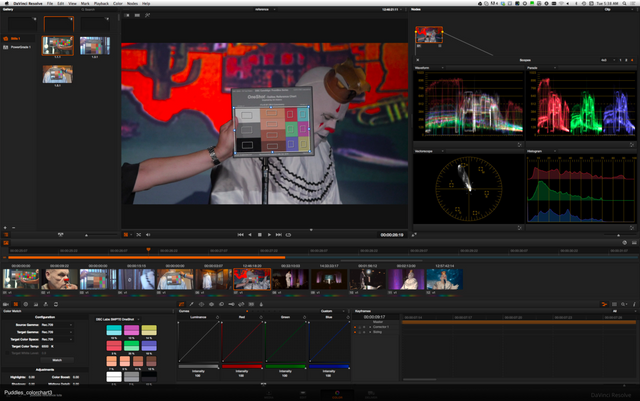 .
Once matched, with a right-click you can save the color LookUp Table (LUT) and then, using the $29 Final Cut Pro X LUT Utility from Color Grading Central, those LUTs can be applied to the video clip in FCPX. I did this with each of the five cameras we used on the shoot and voila… my multicam clip had five matched cameras even before I started editing! This allowed me to edit the piece with good visual continuity well before I started the final color grading process. Here’s what the multicam clip looks like in FCPX:.
.
Once matched, with a right-click you can save the color LookUp Table (LUT) and then, using the $29 Final Cut Pro X LUT Utility from Color Grading Central, those LUTs can be applied to the video clip in FCPX. I did this with each of the five cameras we used on the shoot and voila… my multicam clip had five matched cameras even before I started editing! This allowed me to edit the piece with good visual continuity well before I started the final color grading process. Here’s what the multicam clip looks like in FCPX:.
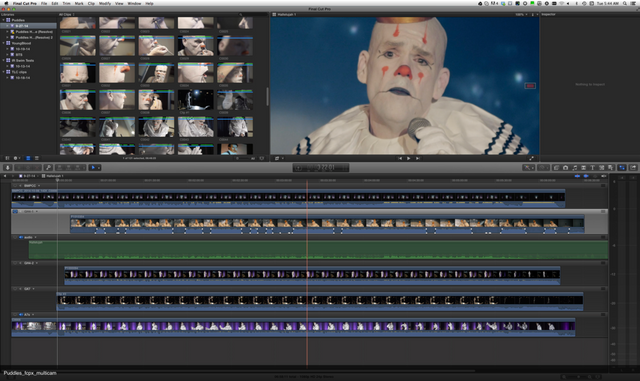 .
Editing among five cameras along with b-roll from the dressing room preparations for the show was easy and straightforward. All of the b-roll was cut into the timeline as connected clips..
.
Editing among five cameras along with b-roll from the dressing room preparations for the show was easy and straightforward. All of the b-roll was cut into the timeline as connected clips..
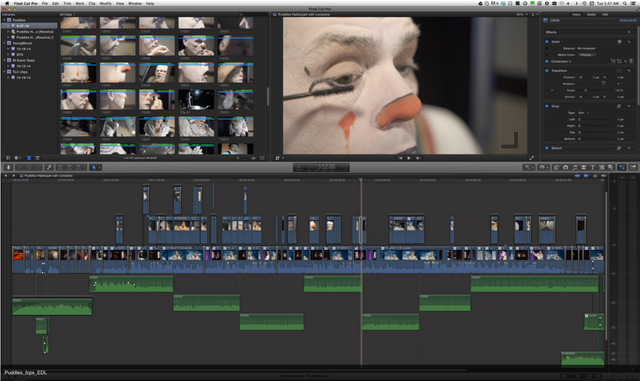 .
Once I was completely satisfied with the edit, I deleted the LUTs from the five master clips and then used the Overwrite to Primary Storyline function to put the entire show into one storyline before exporting it as an fcpxml file for Davinci Resolve. This provided the cleanest way of getting a single timeline into Resolve..
.
Once I was completely satisfied with the edit, I deleted the LUTs from the five master clips and then used the Overwrite to Primary Storyline function to put the entire show into one storyline before exporting it as an fcpxml file for Davinci Resolve. This provided the cleanest way of getting a single timeline into Resolve..
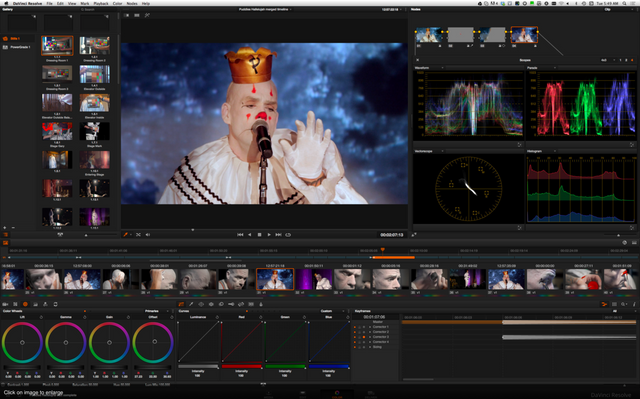 .
I then reapplied the LUTs to the clips in Resolve and added secondary qualifiers to tweak various aspects of Puddles’ makeup, along with animated custom vignettes to direct the viewers’ eye to exactly where in the frame I wanted them to be looking. The color grading process in Resolve is incredibly fun and creative and I always look forward to getting to this stage. (I still can’t believe that Black Magic Design gives this software away for free.) I consider Resolve to essentially be Photoshop for video and would never finish a project without it.
.
I then reapplied the LUTs to the clips in Resolve and added secondary qualifiers to tweak various aspects of Puddles’ makeup, along with animated custom vignettes to direct the viewers’ eye to exactly where in the frame I wanted them to be looking. The color grading process in Resolve is incredibly fun and creative and I always look forward to getting to this stage. (I still can’t believe that Black Magic Design gives this software away for free.) I consider Resolve to essentially be Photoshop for video and would never finish a project without it.
One of my favorite Resolve features is the ability to animate any aspect of the grading process, but most importantly it also provides the ability to grade clips in context with any other set of clips simultaneously, allowing for the type of visual continuity that defines a professionally-finished production..
Shooting a nearly 7' tall clown was tough for me (only 5'7")...
I had to shoot him sitting down a lot. :)
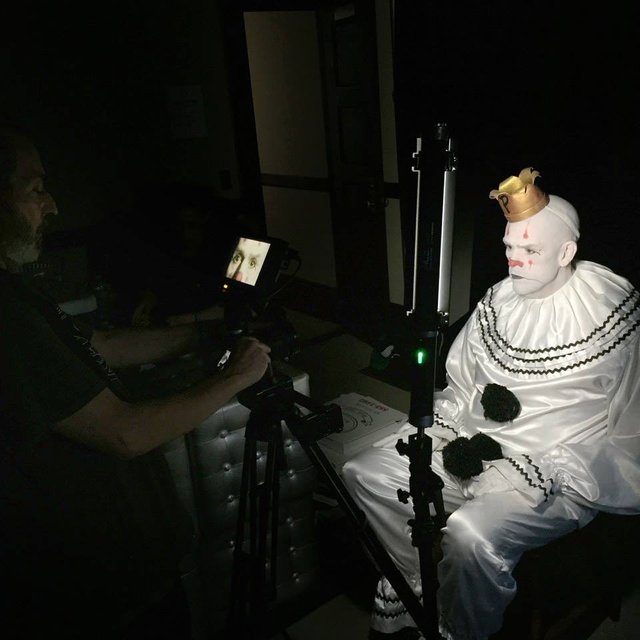 .
.
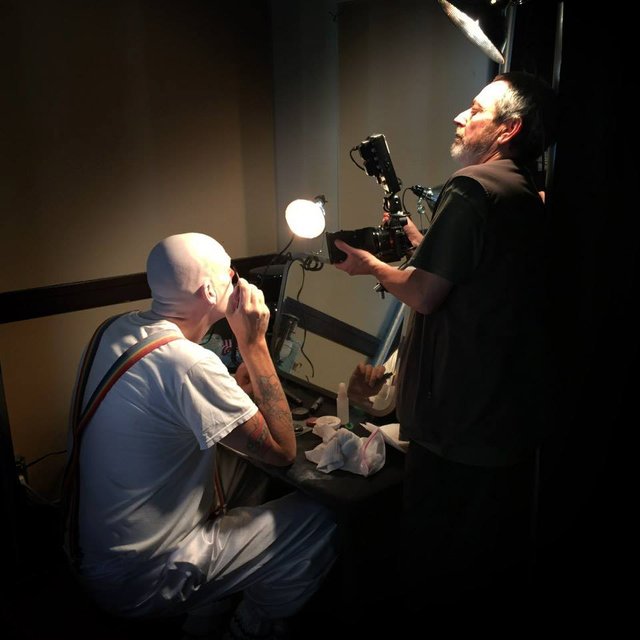 .
Steemians... Thank you for watching and I hope you enjoy the final piece. I had a terrific time shooting, editing and grading it this film. Over 1.3 million people have watched it on Youtube, and their comments have been absolutely fascinating (which is always satisfying).
.
Steemians... Thank you for watching and I hope you enjoy the final piece. I had a terrific time shooting, editing and grading it this film. Over 1.3 million people have watched it on Youtube, and their comments have been absolutely fascinating (which is always satisfying).
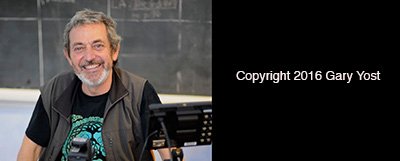 You can find my verification post here.
You can find my verification post here.
 .
.  .
.  .
.  .
.  .
.  .
. 
There is no word for that but unique! Loved it!
Happy to hear that, Victor!
Wonderful! Loved the performance, and also the intercuts to the behind-the-scenes. Very well shot and edited. I love Leonard Cohen as well, so it's like the perfect storm of brilliance. :)
Now, let's get in to the geeky stuff. I have been waiting for months to have a conversation like this on Steemit! The Color Match tool is indeed a boon for multi-cam shoots. It works ever so well. However, it does introduce noise into some cameras which are far from neutral, which makes extreme grades unstable. Shouldn't be an issue in most cases though. The OneShot chart is great - I've been following its designer Art Adams for a while now.
I'm currently using Resolve 12.5 - it's a significant jump from Resolve 11, though a little buggy at this stage. A lot of people are even editing with it. You are right -it's amazing that they give it away for free! They have done the same with Fusion as well now. Their strategy revolves around giving away software for free so people would buy their rather expensive hardware - their founder Grant Petty has clearly been influenced by Apple, and it shows. (Often for the worse, but overall for the best!)
It's a pleasure having you here on Steemit, and I hope we can build a filmmaking community here. :)
Wow... it's so great to see that there is at least one other filmmaker here on Steemit. I've been looking for a blog platform for awhile now, this is a great start. And I'm glad that you enjoyed this project... yeah it was a bit of a perfect storm for that one, funny how those things work out sometimes. This was done almost 2 years ago, so Resolve11 was the thing then. Now I shoot with an Ursa Mini 4.6k, so I've got the full-boat version of Resolve (12.5) and absolutely depend on the great noise reduction in there. My main camera setup now is the UM4.6k, BMPCC and DJI X5R (which shoots raw and matches with the BM cameras really beautifully).
And hey, I think we just started the filmmaking community on Steemit. :)
There are some others too, @winstonwolfe comes to mind. :)
Nice! How are you finding the Ursa Mini 4.6K by the way? I have heard very mixed reaction. The 4K version is quite poor though. I mean, good resolution and colour, the uncompressed RAW is awesome, but abysmal dynamic range and noise performance, not to mention dodgy reliability.
I'll have to check Winston out, thanks. The 4.6k is a dream come true (completely different sensor than the 4k). 14 solid stops of dynamic range, great ergonomics (especially with the 4.0 firmware update), usable audio preamps (at 50% or below), and incredible skin tones. I'm even getting decent low-light performance... maybe tomorrow's post will be about a fun project I made this summer with that camera. In case you're interested, here's my first test I made with the camera in May. Shows the dynamic range and skin tones really well, especially for just a little throwaway test I needed to check out the camera. I love this machine... major home run for Black Magic.
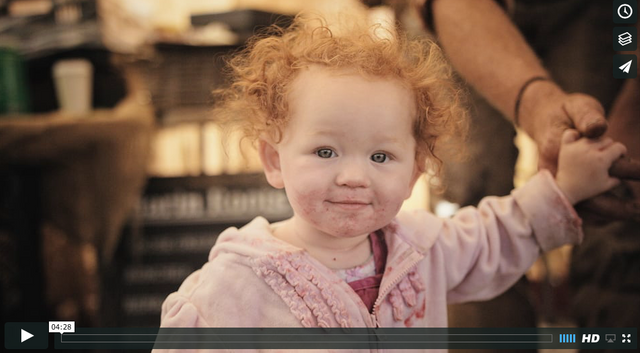
OMG Jean Reno!!!

Ha, funny... this dude is way taller than Reno!
Upvoted for the tip about DaVinci Resolve having a free trial. Halleluja indeed!
Right on... Resolve is one of the most amazing pieces of software of all time, and to think that you can use it for free... totally incredible. It has changed the entire way I look at filmmaking.